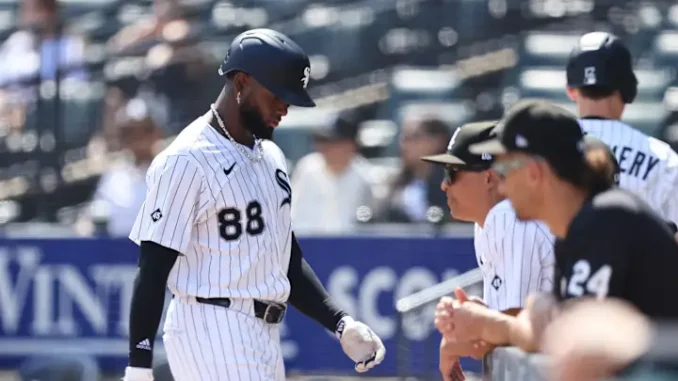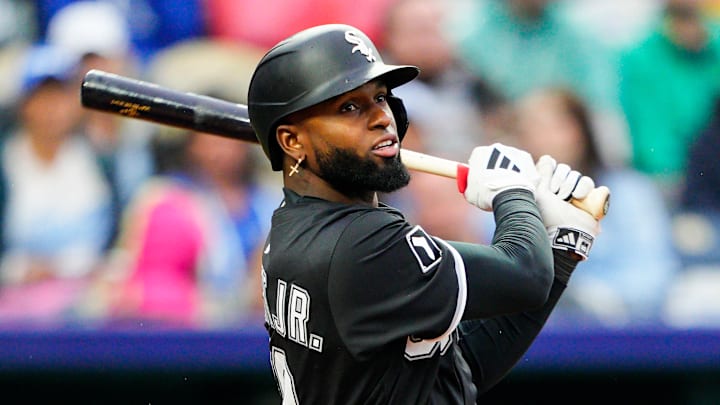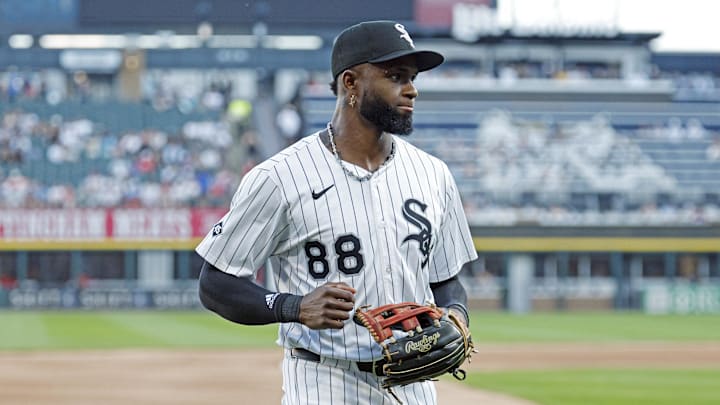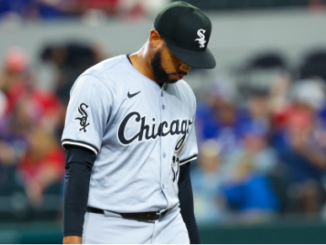
For much of the 2025 Major League Baseball season, one of the most persistent and intriguing storylines surrounding the Chicago White Sox revolved around the future of their star center fielder, Luis Robert Jr. Throughout the year, baseball insiders, national reporters, and fans repeatedly cited the possibility that Robert could be the cornerstone of a significant trade.
Rumors circulated that several contending teams had checked in with Chicago to gauge his availability, hopeful that the White Sox—who were again working through a difficult rebuilding phase—might be willing to move one of their few elite talents in exchange for a package of young, controllable prospects.

But despite all the speculation, despite all the hypothetical trades discussed on talk shows and online forums, and despite pressure from other organizations interested in adding a dynamic center fielder to their roster, the White Sox ultimately chose not to trade Robert. As the season wound down, their decision became more and more clear. Holding onto him wasn’t merely a case of hesitating or waiting for the perfect deal—it was a strategic move that made complete financial and roster-building sense.
Read More: White Sox To Trade Their Best Asset Andrew Benintendi This Winter
The most crucial reason Chicago kept Robert was tied to his contract structure. Built into his deal was a $20 million club option for the 2026 season. That option was widely viewed throughout the league as an enormous advantage for the team because of how affordable it was relative to Robert’s ceiling. When healthy, Robert is regarded as one of the most tool-rich players in the sport: exceptional speed, impressive defensive instincts, raw power at the plate, and the ability to change a game in multiple ways. For a player with that type of athletic profile and upside, $20 million for a full season is a bargain by modern MLB standards, especially with rising salaries for elite outfielders across baseball.
As long as Robert stayed reasonably healthy through the 2025 season, the White Sox weren’t likely to hesitate on the option. And that’s exactly what happened. On Tuesday, Chicago officially exercised the $20 million club option, confirming that Robert will remain with the White Sox for 2026. ESPN reporter Jesse Rogers reported the decision, although most around baseball had already assumed this outcome. The team was never going to let a player of Robert’s caliber walk away when they had cost certainty and control for another season.

This decision doesn’t necessarily remove Robert from the trade rumor spotlight—it might intensify it. By exercising the option, the White Sox now control Robert for an additional year, which could increase their leverage if they choose to engage in trade discussions in 2026. Teams covet star-level players who are under contract, especially when the salary is reasonable. If the White Sox begin the 2026 season slowly or continue to struggle to construct a competitive roster, they may revisit trade possibilities, this time with more urgency or more willingness to entertain offers.
Once the option for 2026 became official, speculation naturally shifted toward what the future holds. With his combination of elite tools and team-friendly control, Robert becomes an even more intriguing trade candidate for franchises that view themselves as one superstar away from a deep postseason run. A team acquiring him would not only get a top-end talent but also cost certainty, something front offices value highly for roster planning and long-term payroll decisions.
While Robert’s star potential is undeniable, the last couple of seasons have been a reminder that talent alone doesn’t guarantee elite production. In 2025, Robert played in 110 games and posted a .223 batting average.
Read More: White Sox has cut ties with .233 hitter
Although the average dipped, he still contributed in significant ways, showing flashes of the game-changing ability that made him one of the most hyped prospects in the White Sox system years ago. He hit 14 home runs and swiped 33 bases—numbers that demonstrate both power and speed. Few players in the game can offer legitimate home run potential along with elite stolen base totals, and Robert remains in that rare category.

However, the decline in batting average added an uncomfortable wrinkle to evaluating his overall production. Over each of the past two seasons, his batting average has trended downward, forcing opposing teams and evaluators to ask a different question: is the drop-off temporary, or is it a sign of a long-term issue in his offensive approach? Scouts and analysts have pointed to one area that remains a challenge for Robert—his strikeout rate.
When he’s locked in, he hits the ball harder than most players in the league, and his raw athletic gifts make him a threat on the bases any time he reaches. But when he struggles to make consistent contact, he can go through prolonged cold stretches where his impact diminishes significantly. For any club considering trading for him, how well he manages strikeouts and adjusts at the plate will heavily influence his value.
Age, however, remains on his side. Robert turned 28 in August, an age where many players are entering, or already in, the prime of their careers. The White Sox still view him as a five-tool centerpiece: power, contact ability, speed, arm strength, and defensive coverage in center field. Those tools don’t disappear overnight. With improved health and a more consistent offensive approach, he could still evolve into one of the most dynamic players in the American League.

Adding to the complexity of Robert’s future is the fact that the 2026 club option is not the final layer of contractual control that Chicago holds. The White Sox also have another club option for the 2027 season, again valued at $20 million. That means the organization could theoretically keep Robert for two more seasons beyond 2025 without needing to negotiate a new long-term contract. This layered structure gives Chicago multiple paths: they can keep Robert as part of their core, build around him if the team improves, or leverage his affordability to maximize value in a future trade.
Read More: ‘Absolutely Sad News’ White Sox Officially Cut Ties With Speedy Outfielder After Forgettable Season
If trade offers in 2026 don’t meet Chicago’s expectations—whether because teams are hesitant about his recent offensive declines or because the White Sox are asking for too much—they can simply carry the decision into 2027. The White Sox have no incentive to rush. The organization controls the timeline, not the marketplace.
At the same time, Robert’s status will remain one of the biggest storylines moving forward. As the White Sox continue their rebuild, every season will include the same debate: is he a foundational piece or the most valuable trade chip they possess? The front office will need to balance fan expectations, roster development, payroll management, and overall organizational direction. But for now, one thing is settled: Luis Robert Jr. will be wearing a White Sox uniform in 2026.
What happens after that—whether he stays as a franchise cornerstone or becomes the centerpiece of a blockbuster trade—remains to be seen. The chapter isn’t finished yet. The story is still unfolding, one season at a time.
More MLB News



Be the first to comment